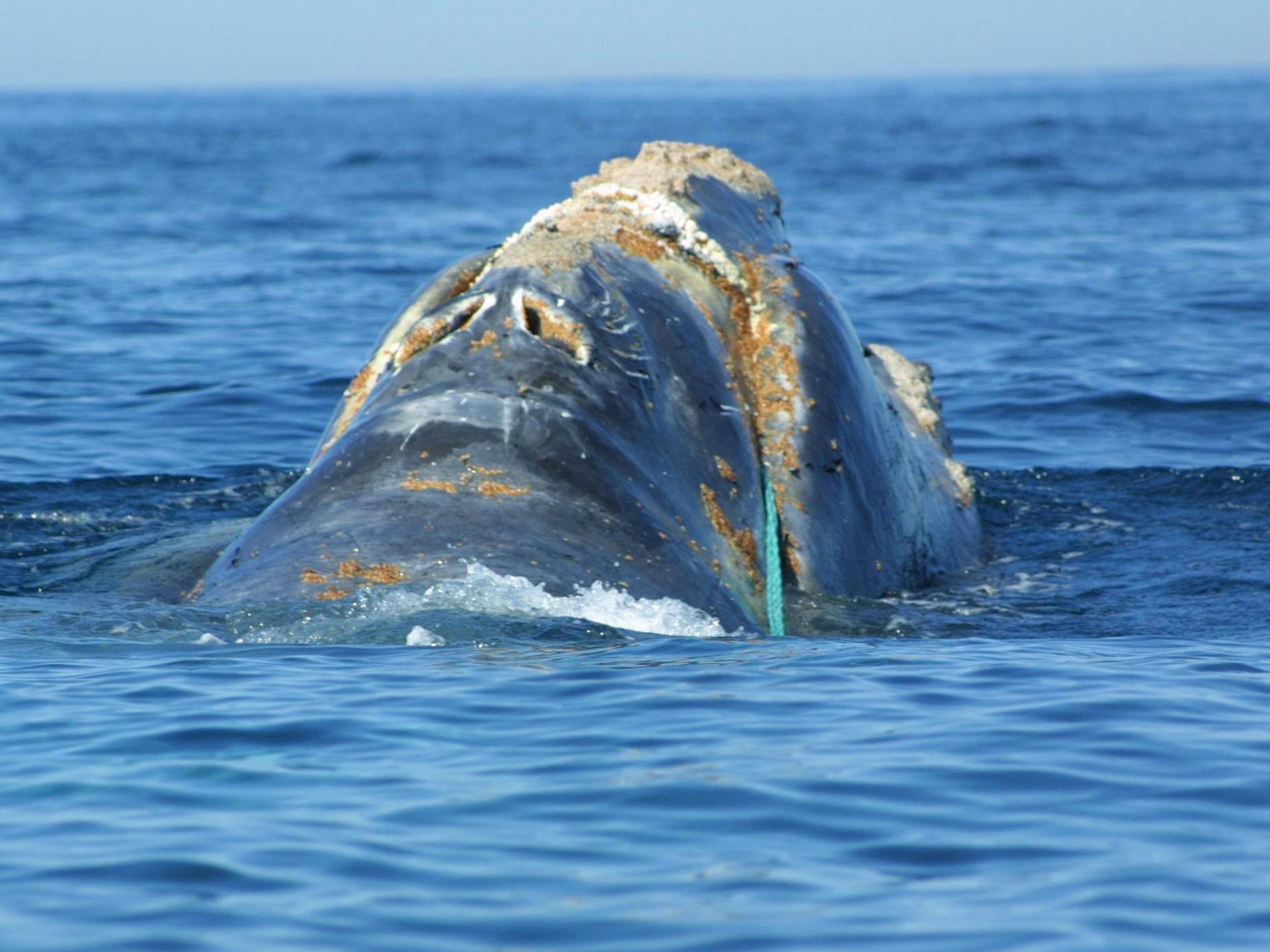North Atlantic right whales face extinction as breeding crisis hits species
Just 100 breeding females are estimated to be left

Your support helps us to tell the story
From reproductive rights to climate change to Big Tech, The Independent is on the ground when the story is developing. Whether it's investigating the financials of Elon Musk's pro-Trump PAC or producing our latest documentary, 'The A Word', which shines a light on the American women fighting for reproductive rights, we know how important it is to parse out the facts from the messaging.
At such a critical moment in US history, we need reporters on the ground. Your donation allows us to keep sending journalists to speak to both sides of the story.
The Independent is trusted by Americans across the entire political spectrum. And unlike many other quality news outlets, we choose not to lock Americans out of our reporting and analysis with paywalls. We believe quality journalism should be available to everyone, paid for by those who can afford it.
Your support makes all the difference.The North Atlantic right whale is facing the imminent threat of extinction as it nears the end of its breeding season without any new births having been observed.
Scientists have warned that without human intervention the species could become “functionally extinct” in 20 years.
It is one of the world’s most endangered large whales with an estimated 300 to 350 individuals left on the planet.
In addition to the lack of births, a larger number of premature deaths have been recorded by scientists on the US east coast.
The greatest threats to the species are from human activity. Shipping lanes mean the whales are at risk of collision with vessels, and calves can become separated from their mothers.
In addition, entanglement in fishing nets and changes to how crabs and lobsters are caught off the Canadian coast have also increased the risks to the marine mammals.
A 10-year-old female was the first recorded North Atlantic right whale death of 2018. It was found tangled in fishing equipment. It followed a high of 18 recorded deaths over 2017.
There are thought to be as few as 100 females of breeding age left in the world. They breed once every three to five years, and have a gestation period of a year. Mothers usually calve in the warm waters near Florida and Georgia, then migrate north to their feeding grounds.
The whales also faces a food crisis due to global temperature rises which are believed to be behind a sharp fall in the amount of phytoplankton available for them to eat.
“At the rate we are killing them off, this 100 females will be gone in 20 years,” Mark Baumgartner, a marine ecologist at the Woods Hole Oceanographic Institution in Massachusetts, told The Guardian.
The increasing number of deaths over the last few years has been put down to the thicker, stronger ropes lobster fishermen off the coast of New England have begun using.
Conservationists have called for an end to using buoyed ropes to mark the location of lobster pots and to instead use more sophisticated location-tagging technologies.
The North Atlantic right whale is a slow-moving species, averaging just 6mph. As a result, it was ruthlessly hunted from around the 11th century until the 17th century, by which time numbers were so scarce it was no longer a viable target.
Despite the species having been protected from whaling since 1930, numbers have failed to recover.
Join our commenting forum
Join thought-provoking conversations, follow other Independent readers and see their replies
Comments